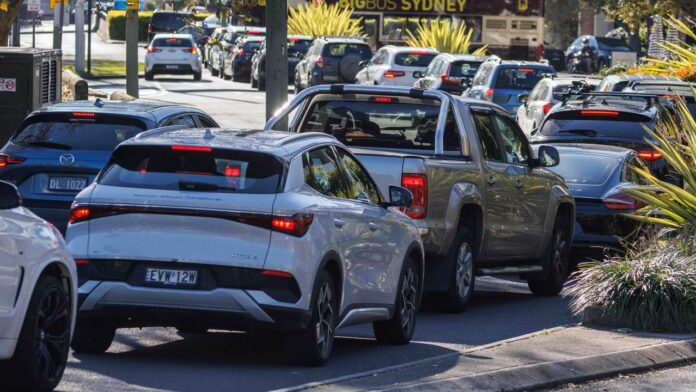[ad_1]
A new comparison site has revealed the most expensive fuel guzzling cars to own, with some popular models achieving a rating of only 0.5 stars out of six.
The Vehicle Emissions Star Ratings allows consumers to compare the annual fuel and electricity costs, and carbon dioxide emissions of new and second-hand cars, utes and vans, which are measured on a six-star rating system.
The NSW government has launched the star rating system which applies to vehicles right across Australia and was developed in collaboration with the federal and state and territory governments.
More than 16,000 models are on the register, with vehicles dating back to 2004.
The multimillion-dollar Aston Martin One-77 Hatch Auto (2011) came in as the most expensive vehicle to run, with annual fuel expenditure of $6860.
While the luxury vehicle had a 0.5 star rating out of six, there are also only 77 of the cars worldwide.
Although sports cars were generally the most expensive to run, the Nissan Patrol Wagon also had a 0.5 star rating, and costs between $4956 to $2996 a year in fuel costs, depending on the model.
Some of Australia’s most popular cars also had surprisingly low scores.
The Ford Ranger, which the Federal Chamber of Automotive Industries consistently reports as its top-selling vehicle has a 2.5 star to 0.5 star rating, and fuel costs of $1820 to $3220.
Depending on the model, the Toyota HiLux had a similar rating, with its most green model the diesel-powered Toyota HiLux Utility Manual (2015). The ute had a two-star rating, and an average fuel cost of $2044.
The ever popular Toyota Corolla scored considerable better. The most clean model was the Toyota Corolla Hatch CVT (2016), which had a 4-star rating and a running cost of $1148.
NSW Energy and Climate Change Minister Penny Sharpe said the comparison site would help guide consumers make better decisions when it came to their hip pocket, and the environment.
“The Vehicle Emissions Star Rating website offers information on emissions and efficiency in a simple format so consumers can choose a new or used car which reduces their emissions,” she said.
Unsurprisingly, battery-operated electric vehicles were the most energy-efficient.
“Battery EVs are the cleanest light vehicles, receiving a six-star rating because they do not produce any tailpipe emissions,” she said.
“The NSW government is supporting their uptake by growing the network of EV chargers across the state.”
[ad_2]
Source link


